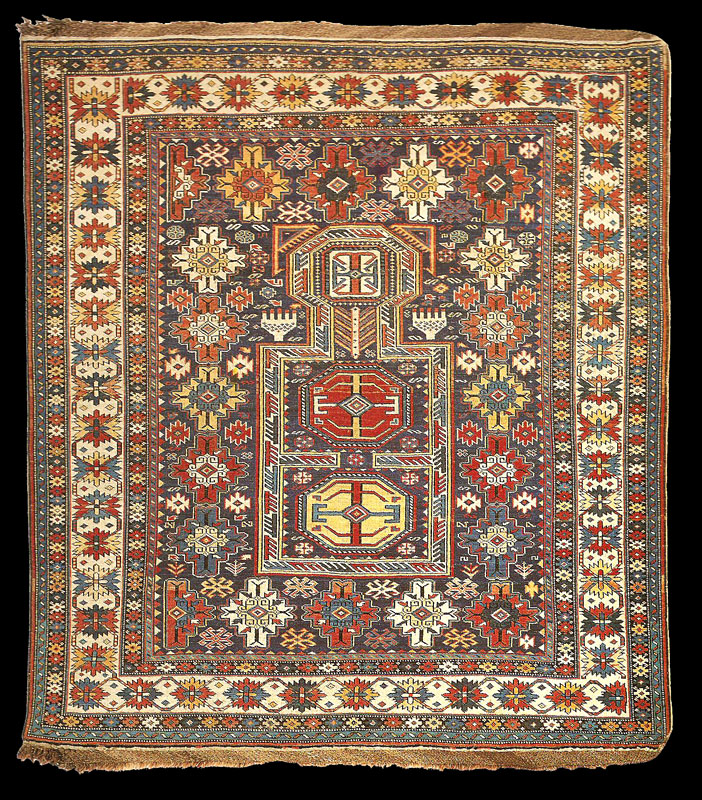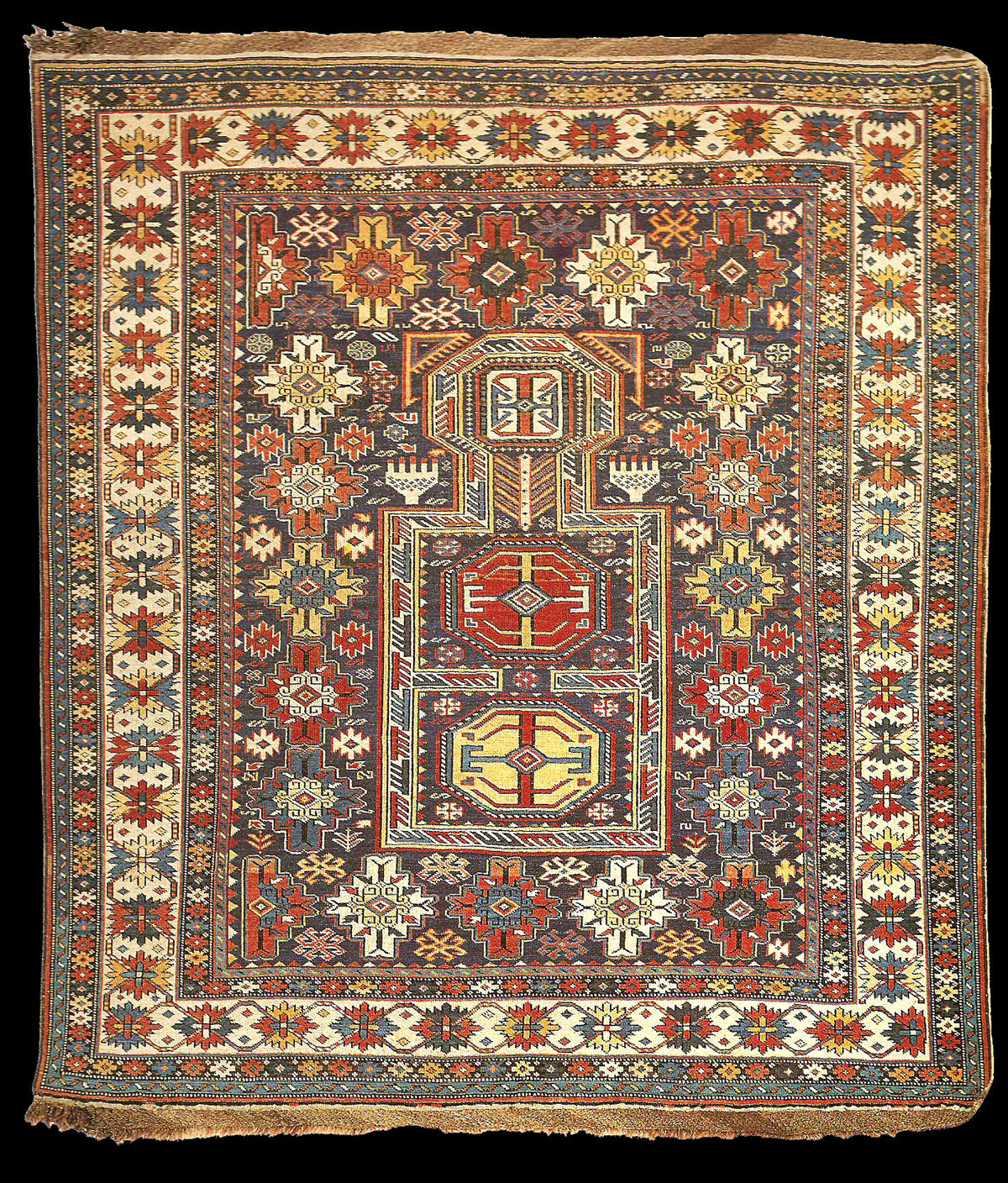|
Rugs with a mihrab in the shape of a keyhole or a stylized 'head and
shoulders' figure were woven throughout east Caucasia, with published
examples from Baku, Kuba, Shirvan, Daghestan and Chichi. Unlike most
Caucasian prayer rugs those in the 'keyhole' and 'head and shoulders' group
do not have a separate gabled or squared prayer arch; instead, the mihrab
floats on the field. This design principle is more closely related to the
style of prayer rugs from Anatolia. The 'head' or prayer arch in these rugs
is virtually identical in shape to the re-entrant arches of Anatolian 'Bellini-type'
rugs of the fifteenth to eighteenth century. (These rugs are so called
because of the paintings of Gentile Bellini, c. 1429-1507, who depicted rugs
with keyhole or re-entrant motifs.) The more immediate influences are the
later keyhole rugs from Bergama and Konya. A wide variety of borders is
employed in this group of rugs, varying primarily by origin. Border patterns
include a polychromatic slanted 'barber pole' (Baku), slanted
bars-and-rosettes (Chichi), geometric guls with "c" motifs (Kuba) and 'crab'
borders (usually Shirvan or Daghestan) as in the pieces shown here.
The common thread connecting all the rugs in this group is the use of
polygonal medallions inside the mihrab (rugs with this medallion design have
been designated Ordutch-Konaghend by Latif
Kerimov). An article published in Oriental Rug Review proposes that these
medallions resemble Kerbala stones (grey prayer stones, usually octagonal in
shape), an observation consistent with the predominately Shia persuasion of
the population. Other common characteristics of this group are hand prints
flanking the prayer arch, and stepped flower heads within the field. Both
elements feature in the examples shown here. The mihrab itself is divided
into two or three compartments beneath the 'bead', each containing a typical
medallion.
A very intriguing rug from this family was formerly in the Jerome and Mary
Jane Straka Collection. It has adjacent double mihrabs, each containing four
compartments, and a border of stepped square forms. This 'side-by-side'
arrangement is extremely unusual, possibly unique, and the only such example
in the 'keyhole' group. This rug was published in Eiland, Oriental Rags, and
exhibited at Mills College. Oakland. California in 1990.
published Ralph Kaffel's Caucasian Prayer Rugs, plate 69
lit: Ralph Kaffel's Caucasian Prayer Rugs, plate
69

 |


